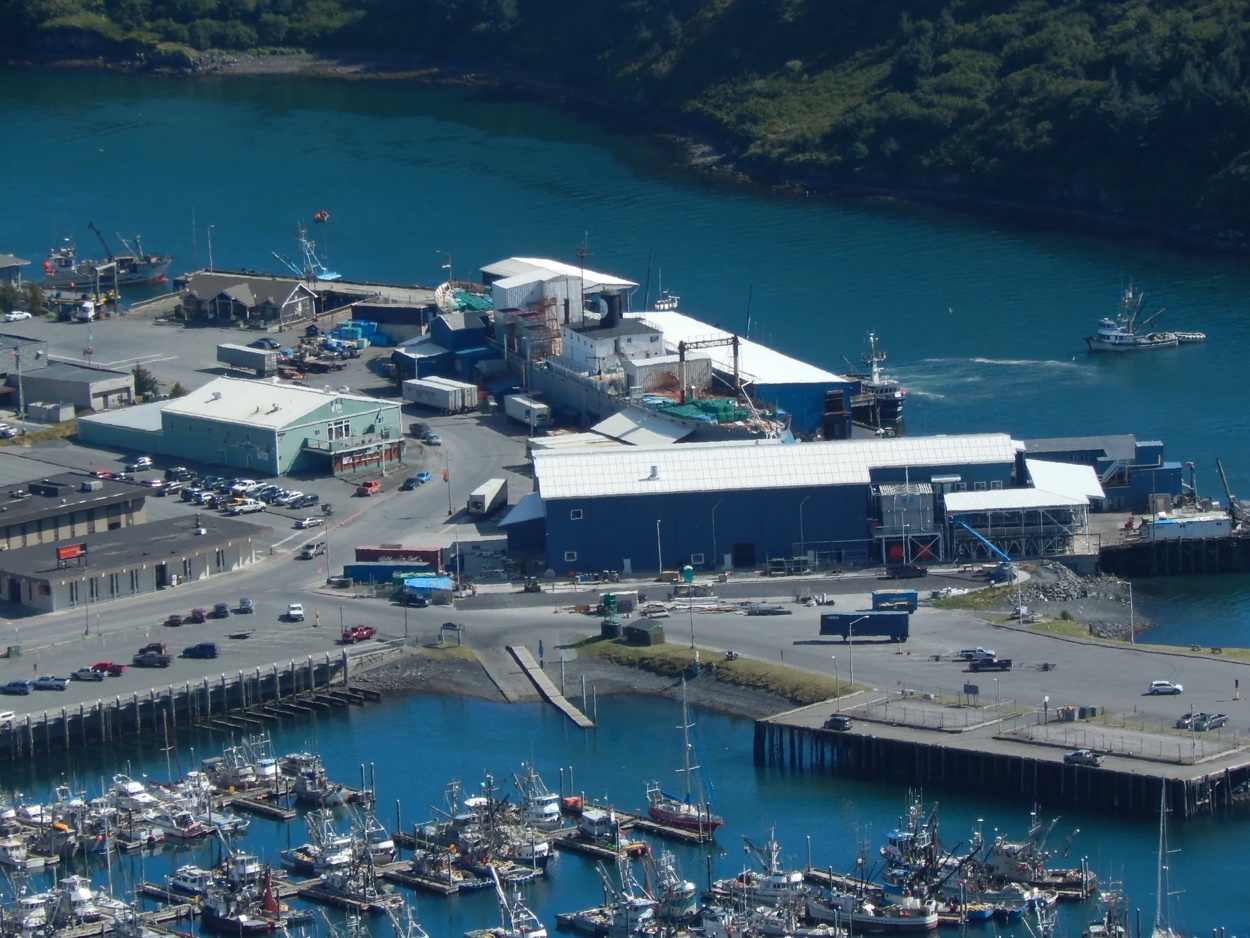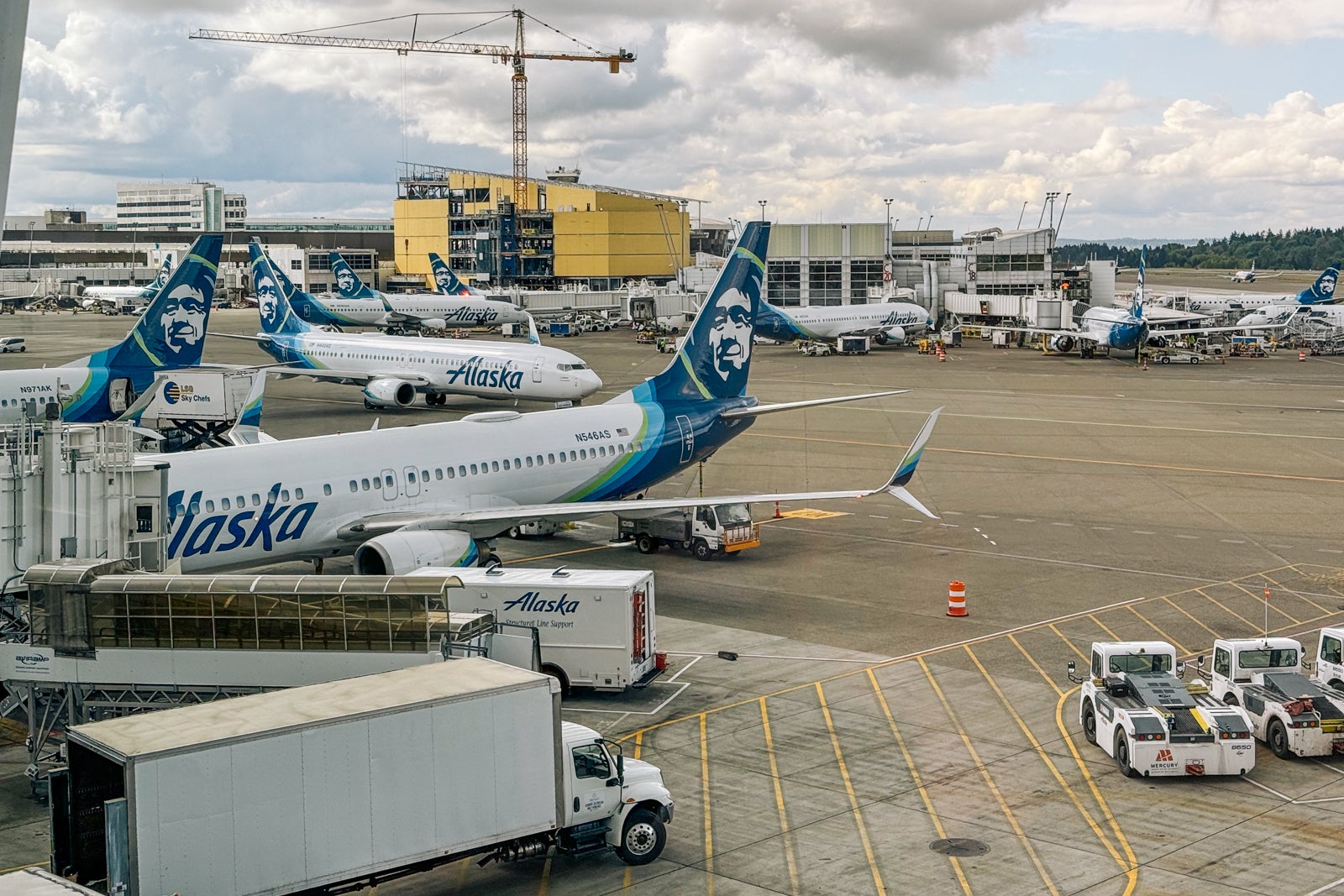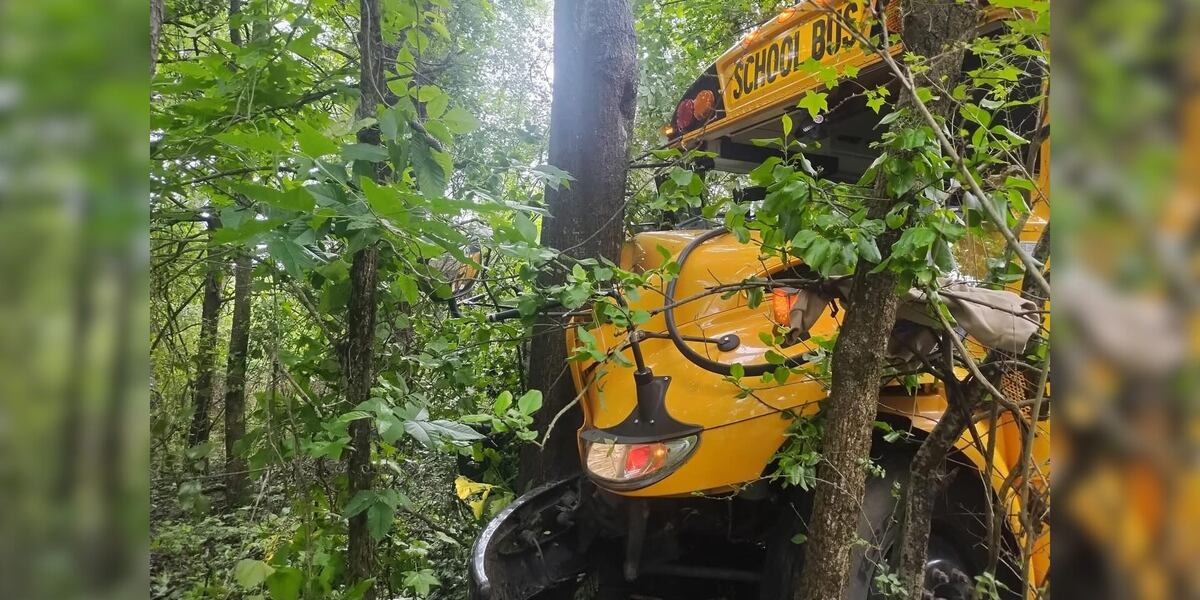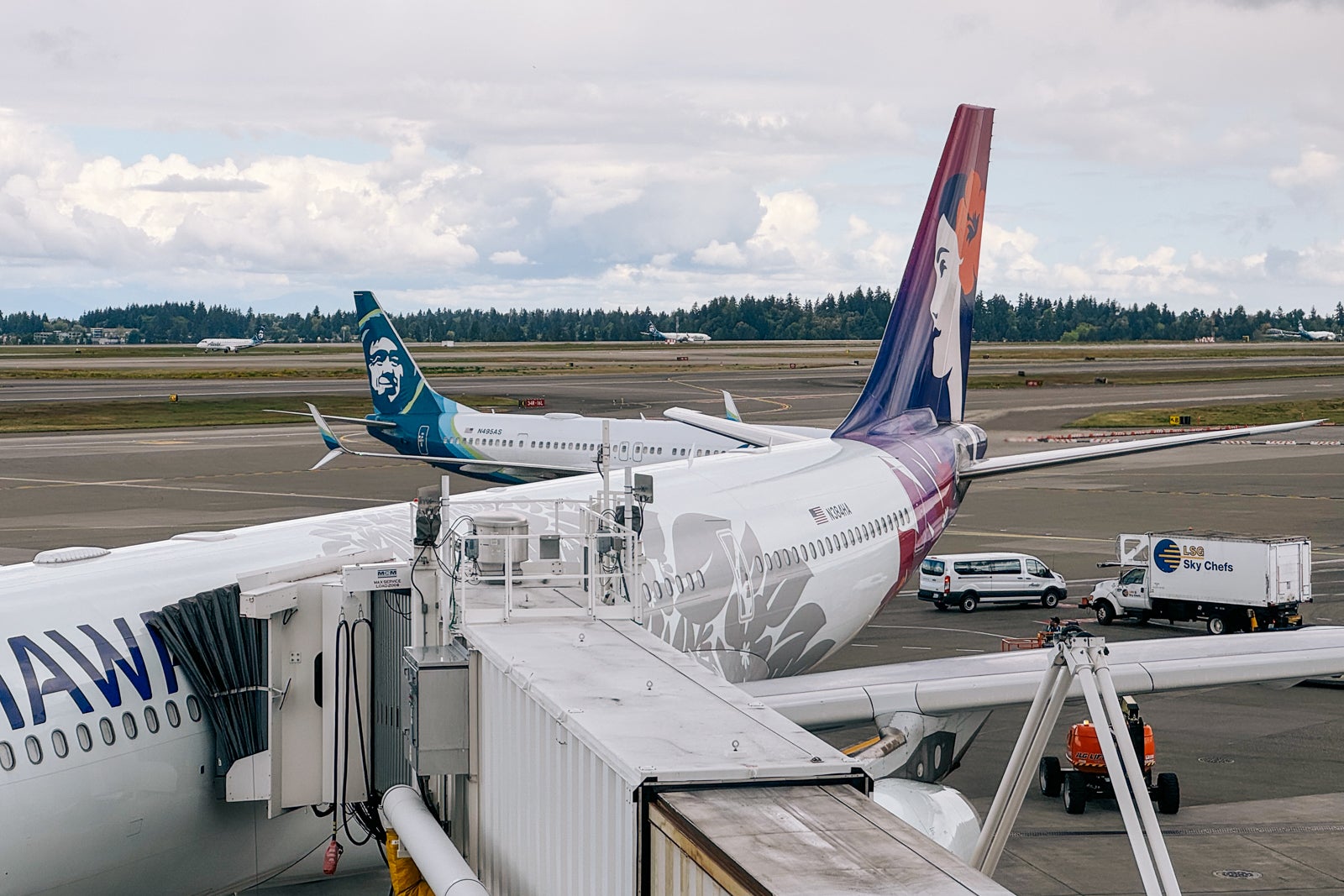Alaska
Breaking: Trident selling off four of 12 Alaska plants

In a sweeping company overhaul, Trident Seafoods is divesting four out of its 12 processing plants located in Alaska. This move will also result in employee layoffs across the company.
The four plants slated for sale are situated in Kodiak, Ketchikan, Petersburg, and False Pass.
Trident Seafoods’ CEO, Joe Bundrant, emphasized the need for decisive action, stating that the steps today to restructure are essential to ensure equitable returns for the fishing fleet, communities, and stakeholders.
While actively seeking potential buyers for the four plants, Trident Seafoods is planning to continue to operate its Kodiak facility on a considerably reduced scale during the upcoming winter season. This restructuring aims to secure the company’s future while adapting to evolving industry dynamics.

“Our Kodiak operations are integral to the Gulf of Alaska fisheries,” said Jeff Welbourn, Senior Vice President of Alaska Operations at Trident Seafoods. “They are highly efficient, multispecies plants, and we are working diligently to find a new owner to support the fleet and the Kodiak community.”
Trident also announced that its regional salmon strategy would refocus operations in Southeast Alaska and Area M.
As the company seeks buyers for its seasonal plants in Ketchikan, Petersburg, and False Pass, it said in a statement, “These are all well-maintained operations that align better with other operators’ strategies. We are optimistic the combination of new ownership and our continued service to the fleet through our other locations will mean little to no disruption for regional salmon fleets.”
To round out the Alaska operations strategy, Trident is retiring or seeking buyers for other assets, such as the historic South Naknek Diamond NN cannery facility and the support facilities in Chignik. The company is also assessing its overall company-owned vessel strategy.
The restructuring effort is not confined to Alaska alone. Trident is also streamlining its head office support functions, resulting in a 10% reduction in workers.
The restructuring effort enables Trident to execute its strategic drive to modernize its processing plants throughout Alaska. In August, the company announced a delay to the three-year plan to build a new, state-of-the-art processing plant in Unalaska’s Dutch Harbor to replace an aging plant in Akutan, Alaska. Construction is likely to resume once the restructuring activities are complete.
“We are modernizing and re-tooling the remaining Alaska plants to be more efficient, effective, and sustainable operations,” the company said. “This will allow us to continue supporting as many fleets and communities as possible across Alaska for the long term.”
The company is also looking at whether it should keep its fleet of fishing vessels.
Trident’s strategy reflects the realities facing U.S. seafood producers in global markets. Across many species, the combination of declining demand, excess supply, and foreign competition has driven prices down, squeezed margins, and displaced U.S. producers from markets that they developed over decades, the company said.
“We are competing against producers in other countries that do not share our commitment to or investments in environmental sustainability, social responsibility, and product quality,” said Bundrant. “Many of our foreign competitors operate with minimal regulatory costs and oversight, inexpensive infrastructure, and exploitive labor practices.”
Overall, I remain confident in the Alaska seafood industry and our role in it. These are significant changes, and we are focused on treating our impacted employees and communities with the respect and compassion they deserve,” said Bundrant. “Embracing these changes and operating a more streamlined company will allow us to reinvest in the communities, people, processes, and assets that enable us to continue our mission of responsibly sharing wild Alaska seafood with the world.”
Trident is a prominent player in the US seafood industry and has plants across Europe and Asia, including China. The list of the Alaska plants are at this company link.

Alaska
Alaska Airlines plans new long-haul experience, retrofits for Hawaiian's Airbus A330s – The Points Guy

Fresh off its acquisition of Hawaiian Airlines last year, Alaska Airlines is gearing up to announce a “beautiful new international experience” — likely on board the Boeing 787 Dreamliners Hawaiian ordered before the two carriers merged.
The reveal is expected later this year, executives said Monday, moments before Alaska and Hawaiian jointly launched their first long-haul flight to Asia.
The new flagship international Dreamliner experience would presumably include an all-new business-class product and serve as the linchpin of the carrier’s future international growth plans out of its Seattle-Tacoma International Airport (SEA) home base — plans that include flights to Europe starting next year.
“What you’ll see is all the flights — international flights — out of Seattle, on 787s … and it’ll be operated by Alaska,” CEO Ben Minicucci told TPG in an interview Monday. “It’ll be a fantastic new international look.”
That’s noteworthy not just because of the prospects of a flashy new international cabin experience on a major U.S. airline, but also because it would be Alaska’s first true wide-body service. After all, it’s Hawaiian Airlines that’s operating the just-launched service from Seattle to Tokyo’s Narita International Airport (NRT), as Alaska and Hawaiian maintain separate brands under one corporate structure postmerger.
But gaining access to Hawaiian’s larger twin-aisle jets — and the Dreamliners it’s had on order for several years — was one of the factors that proved enticing for Alaska when it first sought to acquire the Aloha State’s home carrier starting in 2023.
Now, to be clear: It’ll be a little while before passengers see this new international Dreamliner product hit the skies. These planned 787 shifts are contingent on the completion of labor deals, Minicucci said, which could take a year or two.
Hawaiian had plans to receive a total of a dozen Dreamliners. It debuted its first 787 last spring, with a stunning new interior and serious upgrade over its legacy long-haul fleet.
A330 retrofits coming
Alaska Air Group is also planning an eventual face-lift for the older jets in Hawaiian’s fleet, Minicucci told TPG on Monday.

Daily Newsletter
Reward your inbox with the TPG Daily newsletter
Join over 700,000 readers for breaking news, in-depth guides and exclusive deals from TPG’s experts
The company sees Hawaiian’s Airbus A330s as a continued “niche” in its fleet on Honolulu routes for years to come. But, as I saw on board the Hawaiian-operated inaugural from Seattle to Tokyo, the cabins could use some tender loving care, aside from the free, high-speed Starlink Wi-Fi on board.
Indeed, retrofits for those jets are on Minicucci’s to-do list: “Those interiors,” he said, “will get a makeover in the next few years.” Snarled industry supply chains for seats could throw that timeline into jeopardy, though, he noted.
New loyalty program set for August debut
Alaska also revealed one additional bit of news about the future of its new, joint loyalty program that will encompass both Alaska and Hawaiian. That program will launch in August, Minicucci told TPG.
That figures to be a closely watched reveal, considering Mileage Plan currently offers some of the best sweet spot redemptions of any U.S. airline loyalty program.
“We’re not going to take anything away,” Minicucci told me — though he couldn’t get into specifics.
I did have to ask: Will the program be called Mileage Plan, or get some sort of new name, a la “Flying Blue” for Air France and KLM, or “Bonvoy” for Marriott’s portfolio of hotels? Minicucci only offered this: “It’ll be uniquely branded with a whole bunch of new features on it.”
A far more significant development worth watching: what immediate decision, if any, the company makes on its relationship with American Express. At the moment, Amex members can transfer Membership Rewards points to HawaiianMiles, and then shift those miles seamlessly over to Mileage Plan. Earlier this month, I used that tactic to redeem 4,500 Alaska miles for what would have been a pricey last-minute flight.
Alaska executives have previously expressed hesitancy about allowing flexible currency transfers from credit card programs as they dreamed up this new joint loyalty program.
Bilt Rewards Points do currently transfer directly to Alaska at a 1:1 ratio.
Related reading:
Alaska
Alaska will fly nonstop Sea-Tac to Europe in 2026, CEO Ben Minicucci says

Alaska Airlines’ next new nonstop route from Seattle will be to Europe in 2026, CEO Ben Minicucci confirmed this week in an interview where he laid out his vision for the next few years at Alaska.
Minicucci, a 20-year Alaska Air veteran who was named CEO in 2021, said the recent merger with Hawaiian Airlines is a “step change” for the airline, one that will allow it to expand its reach from the West Coast to other trans-Pacific hubs. Seattle will be at the center of that expansion, with plans to add 12 nonstop global routes with long-haul widebody airplanes by 2030.
Alaska has already announced two of those routes: one to Seoul, South Korea, starting in September and another to Tokyo Narita starting Monday. Hawaiian Airlines was already flying to those destinations, so Alaska was able to capitalize on the infrastructure and expertise it inherited through the $1.9 billion merger that closed in September.
The undisclosed European destination coming next could be a bigger lift. Neither Alaska nor Hawaiian has a presence there.
But Minicucci isn’t worried about the risks. For one thing, he said, Alaska knows what Seattle travelers want and believes the airline could stimulate demand with the new offering. For another, he encourages daring moves at the company, Minicucci said in a recent interview with The Seattle Times, striking a tone reminiscent of Big Tech CEOs out to disrupt industries.
“I want to give our people the ability not to be afraid. I want you to be bold, aggressive, try things. Because nobody ever does great things if you’re always safe,” Minicucci said. “Sometimes you have to put yourself out there and take a little bit of a chance, and feel a little bit that nervousness in your stomach and say ‘Wow, is this going to work?’ ”
Minicucci matches the demeanor of his edict to be fearless. Seated in a nook off the hallway on the upper floor of Alaska’s SeaTac headquarters, he was relaxed as he spoke about the airline’s future. Minicucci said hello to colleagues that walked by, giving off the air of a CEO who is often present in the office overlooking Sea-Tac Airport.
Originally from Montreal, Minicucci joined Alaska in 2004. He worked as vice president of maintenance, vice president of Seattle operations and president of Alaska Airlines, overseeing Alaska’s 2016 acquisition of Virgin America. He took over as CEO from Brad Tilden in 2021. On Thursday, Alaska shareholders approved a compensation package worth $8.6 million for Minicucci in 2024, a dip from the $10.3 million awarded a year earlier.
Nearly five years into his tenure as CEO and nine months into Alaska’s merger with Hawaiian Airlines, Minicucci said he’s moving with more conviction than before.
With the Virgin acquisition, Alaska went slowly, spent a lot of time analyzing decisions and often said “we’re not sure,” Minicucci said. This time, “We made a lot of the decisions out of the gate.”
Betting on new routes
The calculation that goes into picking a new route is a mix of science and art, said Kirsten Amrine, who is in charge of planning Alaska’s network of flights.
The science comes from numbers: Alaska can use industry data to see where and how frequently people are flying, and how much they are willing to pay.
The art is the reason Amrine and her team have jobs, Amrine joked in a recent interview. That side of the equation comes with knowing travelers and anticipating where Alaska’s customers may want to go.
As an example, Amrine pointed to Alaska’s decision to add a direct flight from Seattle to Belize in 2021.
The science didn’t necessarily support that decision, Amrine said. But Alaska’s network planning team knew Seattleites liked adventure and destinations that allowed them to get off the grid. Flights to Costa Rica performed well, so Alaska was willing to bet Belize would be the same.
Amrine considers that decision a success. The number of people flying from Seattle to Belize tripled.
Those types of route calculations are happening all the time. Amrine starts every Saturday morning looking at what changes Alaska’s competitors have made to their network.
Alaska makes weekly changes as well. Those decisions are finalized by Wednesday morning, Amrine said.
But the airline’s plans have a long tail. Alaska books out 331 days in advance, so the decisions made this Wednesday will affect flights in April 2026.
If Alaska is wrong on the science and the art of a destination, the biggest risk is “opportunity cost,” Amrine said. Every destination the airline picks means it can’t take a chance on a different destination, so “you want to think long-term,” Amrine said.
Minicucci holds a similar view. Unlike construction, which can be hard to reverse, airplanes are meant to move, he said.
He pointed to a recent attempt to start nonstop routes from Seattle to the Bahamas in 2023. Alaska ended that Nassau flight this year, determining that the market wasn’t there.
“It didn’t work,” Minicucci said. “We’re going to flip that and put that airplane somewhere else.”
Seattle is somewhat of a testing ground for Alaska, Minicucci said. When the airline expanded routes to Ronald Reagan National Airport in Washington, D.C., for example, it started offering flights from Seattle, then Portland, then San Francisco and Los Angeles, and now San Diego.
Alaska’s international expansion similarly is focused on Seattle now because “we know that’s going to work,” Minicucci said. “But in 10 years, in 20 years, as our airline continues to grow and do better, who knows where we’ll fly (out of) internationally?”
No longer “all Boeing”
The Hawaiian acquisition will put Alaska at odds with the tagline displayed on the nose of many of its planes: “Proudly all Boeing.”
As it integrates the two fleets, Alaska will inherit 24 widebody planes from Boeing’s European rival Airbus.
It’s not the first time Alaska has inherited Airbus planes — it added 60 Airbus aircraft when it acquired Virgin America in a 2016 deal. But it spent the next few years retiring those Airbus planes, hoping to capitalize on the efficiency of operating just one type of plane. That can make it easier and less expensive to train pilots and keep up with maintenance. Alaska was finally “proudly all Boeing” in September 2023.
This time around, Alaska will keep the Airbus planes, Minicucci said, and is relying on them to prop up its trans-Pacific expansion.
The Airbus A319 and A320 narrowbody planes Alaska inherited when it acquired Virgin were too similar to the Boeing 737 planes it was already flying, Minicucci said. Comparatively, the A330 widebodies Alaska inherited from Hawaiian will add new capabilities to Alaska’s fleet, allowing it to reach markets it couldn’t access with the 737.
Alaska also expects to receive 12 of Boeing’s widebody equivalent, the 787 Dreamliner, by 2028.
Alaska’s growing widebody fleet
As Alaska works to expand across the Pacific, it’s relying on a new fleet of widebody aircraft that will allow it to travel farther than the narrowbody planes it already operates.
“We have all the arrows in our quiver,” Minicucci said. “That gives us the possibility of reaching pretty much wherever we want to go out of Seattle.”
Because both Boeing and Airbus have such a large backlog of orders, it would have taken years for Alaska to receive the same Airbus widebody planes it is now gearing up to integrate into its fleet.
Moving away from “proudly all Boeing,” will add some complexities, Minicucci said, adding that he was confident his team could handle it smoothly. Pilots will go through additional training and simulations. Maintenance will require new facilities and tools. Even loading baggage on widebodies requires different equipment than that for the 737.
The Airbus A330s will be housed in Honolulu, using Hawaiian’s existing infrastructure. Alaska will build a new hangar to accommodate the Boeing 787 planes on the West Coast, though Minicucci couldn’t yet say where.
Finalizing the merger
Alaska laid out four milestones on its path to integrate the two airlines.
First, it will combine frequent flyer programs. Then, it must receive a single operating certificate from the Federal Aviation Administration, meaning the safety regulator has signed off that one set of management is in charge of both airlines and the combined carrier is operating safely.
Alaska plans to cross both those milestones by the end of the year.
After that, it will bring both airlines under one reservation system by mid-2026.
Lastly, it will combine the two unionized workforces and settle joint collective bargaining agreements. Those negotiations have already started and Alaska hopes to finalize agreements by 2027.
While Alaska is integrating Hawaiian into its operations, it wants to keep both brands distinct. So, even though customers will be able to use the same reservation system to book a flight on Alaska or Hawaiian, the onboard experience will be different. Flights to, from and within Hawaii will keep the Pualani logo on the plane’s tail.
Operating two distinct brands isn’t something airlines usually do after a merger and Minicucci said he faced some skepticism about the decision. But he’s “totally convicted” on doing so.
“That brand is just too special. It has a lot of equity and value, especially in the state of Hawaii,” he said. “I am convicted and resolute that brand is there forever.”
The concerns don’t faze him, Minicucci continued. “Just because it’s never been done, doesn’t mean it can’t be done.”
Alaska
Before he rose to fame and sparked controversy, L. Ron Hubbard was a seafaring radio host in Alaska

Last week, this column covered the curious path of hard-boiled crime writer Dashiell Hammett, who was near 50, sickly, a celebrity and a Communist Party member when he went from Hollywood fame to Army enlistment to his posting in remote Adak. Of course, Hammett was far from the only celebrated author with ties or at least a significant visit to Alaska. From Jack London to freshly minted Pulitzer winner Tessa Hulls, Alaska has lured and inspired numerous writers. Next week’s column will cover two particularly diverse examples: Shel Silverstein and Aleksandr Solzhenitsyn. And this week is yet another disparate character, L. Ron Hubbard.
When Lafayette “you may call him L” Ron Hubbard (1911-1986) washed ashore at Ketchikan on Aug. 31, 1940, he was a generally well-regarded author of pulp magazine tales. Today, he is overwhelmingly recognized as the inventor/founder of Scientology, and of shakier reputation. But 1940 Hubbard was years away from Xenu and his volcano, “Dianetics” (1950), the science-fiction novel “Battlefield Earth” (1982), and the maligned film adaptation starring Scientologist John Travolta that bombed in 2000, long may its memory fade.
Back then, he was best known for his prolific writing and numerous pseudonyms. During the 1930s, a heyday of Wild West, detective and other pulpy genre adventure magazines, it seemed like every other issue contained a Hubbard story. His official biographies make outlandish claims that he wrote more than 7 million words during the decade, but the actual output of around 160 articles published from 1933 to 1941 still represents a rather fevered pace.
Hubbard was sailing around Alaska as part of what he grandiosely referred to as the Alaskan Radio Experimental Expedition, though he indeed carried the prestigious Explorer’s Club flag, a distinction typically reserved for scientific expeditions. And Hubbard accordingly claimed he was testing various instruments and methods of radio position finding.
In 2018, the Church of Scientology held an awards banquet for 70 of their most significant benefactors at the Cape Fox Lodge in Ketchikan, part of their pattern to hold events in places where Hubbard visited, worked, or lived. Per the church, Hubbard “came up to study the Tlingit Indian tribes, and send back a finding of the research of the tribes and the ethnological factors of the Indians here.”

Back in 1940, The Ketchikan Chronicle offered a humbler description of his arrival and intentions. “Capt. L. Ron Hubbard, author and world traveler, arrived in Ketchikan in company with his wife aboard the vest pocket yacht, Magician. His purpose in coming to Alaska was two-fold, one to win a bet and another to gather material for a novel of Alaska salmon fishing.” The bet was whether the 27-foot Magician, which Hubbard nicknamed the Maggie, would survive the voyage north. The further reality was a shot engine and empty pockets, meaning a large part of a winter stranded in Ketchikan.
Russell Miller’s critical 1987 biography, “Bare-Faced Messiah,” notes Hubbard’s friends called the voyage “Ron and Polly’s trip.” Miller also quotes Hubbard’s Aunt Marnie: “Ron dreamed up the trip as a way of outfitting the Maggie. His brain was always working and when he was trying to figure out how he could afford to outfit the boat he wrote letters to all these different manufacturers of instruments and equipment offering to test them out.”
Suffice to say, accounts vary. No matter, there is little reason to believe Hubbard and his wife spent months in Ketchikan except for the need to earn enough money for boat repairs and subsequent escape. But a dashing young author, near enough a celebrity as far as locals thought, stood out around town. The 29-year-old writer soon found work with the KGBU, now KTKN, radio station, an announcer and as the host of his own program, “Mail Buoy.” It would be more accurate to say that the station eagerly offered him a position and hoped he would never leave.

Longtime Ketchikan historian June Allen (1929-2016) recalled the opening to the show in a 2005 SitNews article. “Station owner Jimmy Britton’s well-remembered and breathless, asthmatic voice grandly intoned over the airwaves: ‘KGBU brings you the Mail Buoy, a program especially designed for Alaskan boatmen. It is the hope of this station that the exchange of information regarding the sea and ships will be found of benefit to those who wish to brush up on their calling, to those who wish to study the fine art of fighting the sea, and to those old-timers who can help the world to remember how to make all things shipshape and Bristol-fashion by keeping close tally on the data contained in this presentation.’” After describing the host, Britton declared, “Here now is Captain Hubbard,” followed by four bells and a jingle.
True to concept, the show was focused on practical maritime matters, with episodes on “Handling Your Hull” and “Anchors.” Other episodes answered listener questions, such as the “crackling and hissing” static heard on radio broadcasts, which he blamed on older radios and interference from electrical appliances. As might be expected, Hubbard was smooth on air, quick with a story and instantly a popular listen.
He also later claimed that he utilized his radio expertise to assist the FBI in tracking down a Nazi saboteur. No official records have been found to verify this tale, but Hubbard did write a short story inspired by his time in Ketchikan. In “Chee-Chalker,” first published in 1947, a tenderfoot FBI agent unravels a string of murders and uncovers a heroin smuggling ring, while entangling himself with a halibut heiress, as one does. A “chee chalker” is Hubbard’s version of a “cheechako.”
Years later, Hubbard said of notoriously vice-ridden Ketchikan, “They have there in Ketchikan, the only stream in the world where the fish and the fisherman go up to spawn. It’s a red-light district. It stretches up around the curve, a very beautiful stream. But the buildings have trap doors — most of Ketchikan is built over water. The fishermen — it’s mostly fishermen that come in there with any money — wear rather heavy rubber boots, and water gets into these boots rather quickly, and they go down rather fast. But when the police do find a fisherman drowned or floating there in the straits without anything in his pockets, they look him over very carefully and say, ‘Hmmm! Suicide!’”

During his radio broadcasts, Hubbard always found a chance to mention that he and his wife were stuck in Ketchikan because Regal Company of Bremerton, Washington, made a defective crankshaft and refused to replace it. Over and over, it was Regal Company’s fault. And when a new crankshaft arrived that December, he was believed it was only due to his on-air admonishments. Regardless, the Hubbards left as soon as the engine was fixed and arrived back in the Lower 48 on Dec. 27, 1940.
In addition to the gifted crankshaft, he also borrowed money around town, for living and repair expenses. Most notably, he owed First National Bank $265, about $6,000 in 2025 money. When World War II began, Hubbard went in the Naval Reserve. The bank thus tracked him down via the Navy. He agreed to pay the interest on the principal but claimed hardships prevented him from paying more. In an Oct. 29, 1942 letter, he wrote, “You are again informed that the reason of non-payment of this note is the sharp decrease in pay which I was willing to take to help my country. Until this war is ended and I can resume my former profession I can make only small and irregular payments.” It is unclear when or if the debt was settled.

There was one last relevant intersection of Hubbard and Alaska. Per an official proclamation by Alaska Gov. Steve Cowper, March 13, 1989 was to be L. Ron Hubbard Day — that is, until interrupted by then-Daily News reporter, and now novelist, Stan Jones. In a scathing article, Jones recounted the many allegations, scandals and lawsuits regarding Scientology, including the claim by Hubbard’s own son that his father created the religion “off the top of his head while he was under the influence of drugs,” the latter from an interview originally published in Christianity Today. “Hubbard Day” was quickly canceled, with the governor deciding he “does not identify” with the church or Hubbard.
Cowper’s press secretary, David Ramseur, told Jones, “Those proclamations come through the press office and I approve them. The governor does not sign off on proclamations unless they’re of enormous consequence. Or of more significant consequence than this.” Ramseur additionally noted that such proclamations were signed by a pen. Therefore, Cowper never actually saw the Hubbard Day proclamation and knew nothing about it. Jones asked Ramseur how much research was conducted before the declaration was approved, to which the press secretary replied, “Not much.”
A Daily News editorial stated, “If anybody in the governor’s press office had known the difference between scientology and Shinola, L. Ron wouldn’t have got a minute, let alone a day.” That said, it continued, “Gov. Cowper could do Alaskans a favor by tossing all those proclamations in his shredder and declaring Monday ‘No More Proclamations Day.’ The governor — and for that matter the legislature — has proclaimed enough.”
Anchorage Mayor Tom Fink‘s press office was more familiar with Scientology or more diligent in their research. They also received the suggestion for a “Hubbard Day” but rejected it out of hand. Fink aide Yvonne Alford told the Daily News, “Part of it, of course, is the controversy that surrounds the Church of Scientology and, further, Dianetics is a commercial enterprise. We do read the information that comes in for proclamations.”
Sometimes, usually, it is for the best that the future is unknown. At the least, it would have complicated matters for the denizens of a small fishing and lumber town to know where their local radio host would go, what he would become. Had he wanted to stay, he would have been welcomed, but greater fortunes awaited. His stint in Ketchikan was relatively brief and of little import, particularly compared to the self-created tumult of the decades that followed. Yet, he never forgot Alaska. References to his time in the north abound in his official biographies, and his Ketchikan tenure is an appreciated aspect of his personal journey. All to say, it proves that the immensity and grandeur of Alaska affects us all, affects every sort of person.
Key sources:
Allen, June. “L. Ron Hubbard’s Alaska Adventure.” SitNews, January 19, 2005.
“Church of Scientology meets in SE.” Sitka Sentinel, April 27, 2018, 6.
Jones, Stan. “Governor Gives Day to L. Ron Hubbard.” Anchorage Daily News, March 9, 1989, A1, A14.
Miller, Russell. Bare-Faced Messiah: The True Story of L. Ron Hubbard.
Persily, Larry. “Scientologists Refute Reports.” Anchorage Daily News, March 14, 1989, B1, B3.
“Whereas and Therefore.” Anchorage Daily News, March 10, 1989, B4.
-

 Austin, TX3 days ago
Austin, TX3 days agoBest Austin Salads – 15 Food Places For Good Greens!
-

 Education1 week ago
Education1 week agoIn Alabama Commencement Speech, Trump Mixes In the Political
-

 Technology1 week ago
Technology1 week agoBe careful what you read about an Elden Ring movie
-

 Culture1 week ago
Culture1 week agoPulitzer Prizes 2025: A Guide to the Winning Books and Finalists
-

 World5 days ago
World5 days agoThe Take: Can India and Pakistan avoid a fourth war over Kashmir?
-

 Education1 week ago
Education1 week agoUniversity of Michigan President, Santa Ono, Set to Lead University of Florida
-

 Technology5 days ago
Technology5 days agoNetflix is removing Black Mirror: Bandersnatch
-

 Politics1 week ago
Politics1 week agoEPA chief Zeldin announces overhauls to bring agency back to Reagan-level staffing
























